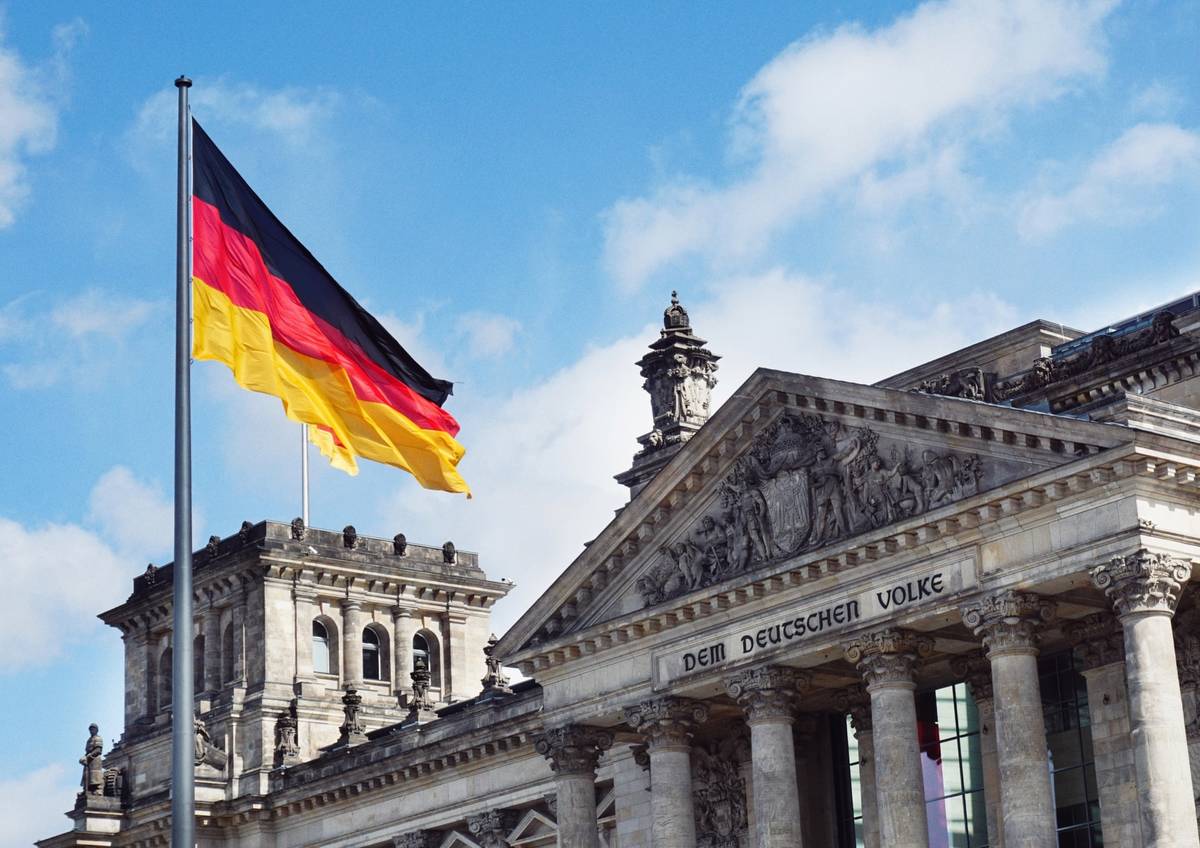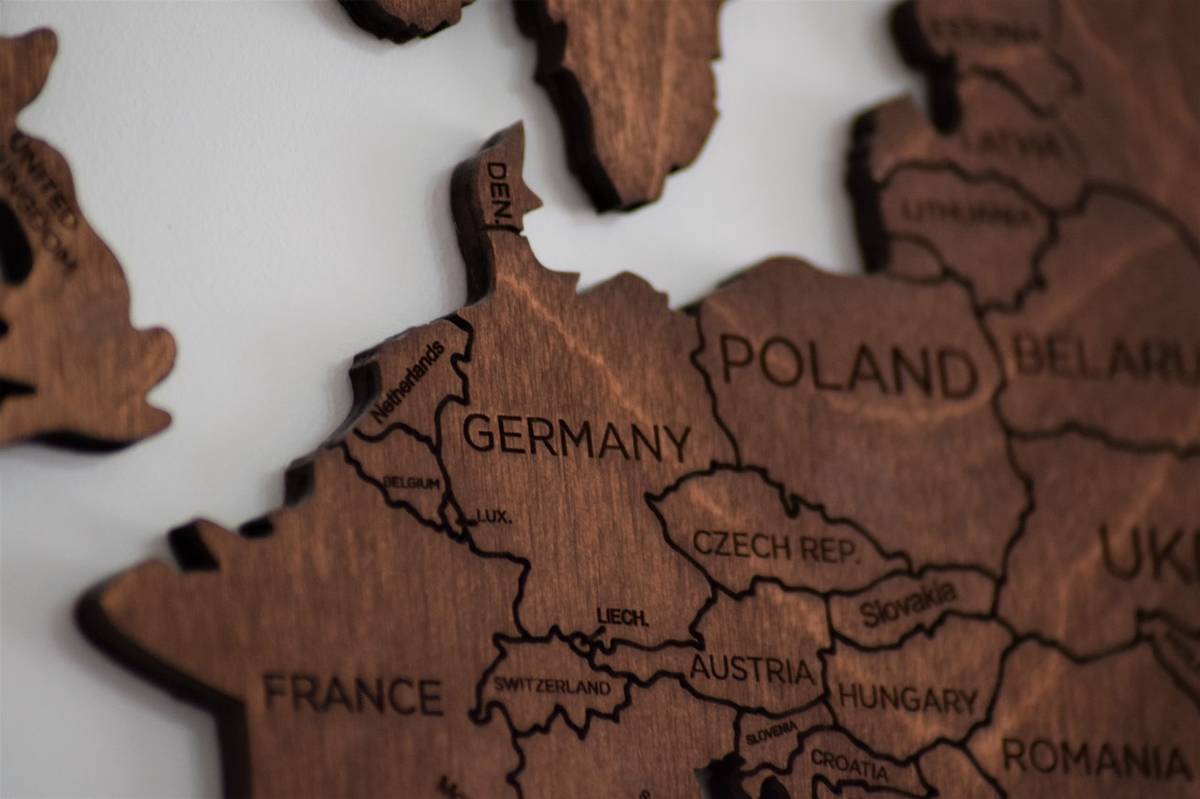When you think about German, you most likely think of Germany. It is the largest country in the European Union, measured by its population of around 83 million inhabitants. Most of them speak German as their mother tongue and many others as a second or third language. Therefore, it is no surprise that German is the most spoken language within the EU.
German can also be found outside the borders of Germany, namely, in a staggering 42 countries across the globe where people speak German as their native language. How did this come to be and which countries are they? We will shed some light on the origins of German and how it spread across the world.
History of the German language
German has a very long history that dates back around 4,000 years. About 2,000 BC, the separation of the Germanic languages from the Indo-European began with the resettlement of the western Baltic region. This was a process that involved linguistic changes – the first shift in sound and changes in accent, as well as the formation of verbs.
Through migratory movements, large Germanic tribes formed and further differentiated the language. At around the 5th century AD, West Germanic emerged alongside East and North Germanic as the origin of the German language.
Over the course of the centuries, the linguistic delimitation of German took place and led to the development of different dialects and to the division of the German-speaking area into Low German (Niederdeutsch) and High German (Hochdeutsch). The latter is the standard German that we know today.
Fun fact: English has its roots within the Germanic languages as well. Dutch is another language derived from Germanic languages, and today is much closer to it than English.
Austria and Switzerland
Apart from Germany, the two most “German” countries are Austria and Switzerland. Austrian German is closely related to dialects spoken in Bavaria, but it derives from Standard German. It is also called Austrian Standard German.
The country of Austria has its roots as part of the Duchy of Bavaria around the 10th century. Up until 1806, it was part of the Holy Roman Empire as an archduchy. Close proximity to the Germanic language over the centuries had a clear impact on the development of Austrian German, as the people of both countries were historically very similar.
In order to standardize the many dialects spoken across the Habsburg Empire, Empress Maria Theresa made schooling compulsory in the late 18th century and proclaimed the standardized language of Saxony as the official language. Her son Joseph II tried to implement German as the official language also in Hungary, over which they ruled at the time. It wasn’t very successful, as the German spoken in Saxony differed from that in Bavaria and Austria quite substantially.
Today, Austrian German is a variation of German that differs in minor aspects such as grammar, spelling, and word usage. Overall, Austrian German and High German are largely identical and understood by both Austrians and Germans, as well as anyone that studies the language.
Switzerland, on the other hand, is a different case. Until the First World War, Swiss German (Schweizerdeutsch) was largely similar to that of the other German dialects, as it was spoken in public life in the big cities. A Swiss peculiarity was that the upper classes and the families of the bourgeoisie in some cities like Bern and Basel preferred to speak French, therefore creating a language with influences of Germanic and Francophone origin.
Due to the two world wars and the interwar period, Swiss German became decisive to the German-Swiss identity and thus a means of distinguishing oneself from Germany. Linguistically, this distinction is expressed in the fact that the standard language often associated with Germany is hardly ever used as a spoken language. Today, there are approximately 4.9 million people speaking some form of Alemannic dialect in Switzerland, from which Swiss German originates.

German as a lingua franca
It is estimated that there are around 130 million people across the globe who speak German as their first language. There are also numerous countries in which German is a lingua franca, an official language. These are:
- Germany
- Austria
- Switzerland
- Liechtenstein
- Belgium
- Luxembourg
Due to its history – mainly the Holy Roman Empire, which made use of the Germanic language, and the Austro-Hungarian Empire – German is still very prevalent in many other European countries. The following consider German a minority language or even a co-official language:
- Italy (especially South Tyrol, bordering Switzerland and Austria)
- Czechia
- Hungary
- Denmark
- Poland
- Russia (home to around 800,000 people of German descent)
- Romania
- Slovakia
Germany’s colonial history
In the 1880s, Germany emerged as an imperial power. The country’s first chancellor, Otto van Bismarck, invited other European heads of state to Berlin to attend the so-called Congo Conference. Initially, the focus of this was mainly on West Africa, but it resulted in the Scramble for Africa. The Berlin Conference of 1884 sought to regulate trade in Africa as well as the colonization of it.
Germany, France, Britain, Spain, Portugal, Italy, and Belgium divided the continent up among themselves, drawing borders seemingly at will and dividing peoples in the process. This caused incredible violence, displacement, and conflicts that still linger on today. The biggest portion of Africa fell under French and British control. Germany became the colonial ruler over modern-day Namibia (Deutsch-Südwestafrika from 1884 to 1915), Tanzania with Rwanda and Burundi (Deutsch-Ostafrika from 1884 to 1918), as well as Togo (Deutsche Kolonie Togo, 1884 to 1916) and Cameroon (1884 to 1919). The colonizers’ language was forced upon the native population.
After the First World War, Germany lost its colonies to other European powers. Today, Namibia consists of the largest German-speaking population in Africa, with around 20,000 native speakers. In neighboring South Africa, a significant number of people are of German heritage too, which can be traced back to settlers arriving during the 19th century. Many of those were later absorbed into the Afrikaans community and don’t speak German as their first language. Namibia, Tanzania, and especially South Africa remain a popular destination for German travelers.
Germans in North America
There is an urban legend that claims that German almost became the official language of the United States of America, but lost by one vote to English. Indeed, there is some truth to that, although the details differ. The USA is home to about 46 million people of German ancestry, which makes it the largest ancestry group in the country. It is followed by African-Americans (38 million), Mexican (34 million), Irish (33 million), and English (24 million).
According to a 2019 census, the largest German populations are found in Pennsylvania, Wisconsin, California, Texas, Ohio, and Minnesota. Many of them speak German as their second or third language, and for only a few it is their actual mother tongue.
North of the border, in Canada, about 10% of the population claim German ancestry. That amounts to around 3.2 million people. Although ancestry doesn’t mean that they speak German, it is estimated that around 400,000 people in Canada speak German as their first language.

Photo by Carolyn
German diaspora in South America
South America is home to quite a number of Germans, Austrians, and Swiss, as there are large communities in many countries, mainly in Argentina and Chile. Roughly 1% of the population in Argentina speaks German, which is around 500,000 people. A total of over 3 million can claim German ancestry. The country became a refuge for about a thousand Nazi leaders after the end of the Second World War. Adolf Eichmann, who was later convicted of war crimes in Israel, and Josef Mengele were among them.
During the Nazi regime, many German Jews also fled Europe to South America and settled in countries like Colombia, which even tried to stop the immigration.
Brazil consists of a total population of around 212 million people, of which 5 million claim German ancestry and 3 million speak German as a second or third language. They mainly live in the south and southeast region of Brazil.
In Chile, roughly 3% of the population is of German heritage, and around 40,000 people speak Standard German (Hochdeutsch). From the mid-19th century, South America became a popular destination for German migrants, who settled in the Spanish and Portuguese colonies. A particularly interesting case can be found in Venezuela, where the town of Colonia Tovar is situated. It was founded in 1843 by 390 immigrants that all came from the Grand Duchy of Baden, which by then was still an independent duchy, before becoming part of Germany. Today, there are about 21,000 people living there. The move from the Grand Duchy of Baden to Venezuela was organized by a colonizing company that had set out to find inhabitable land in South America. Colonia Tovar hosts a small number of people that speak in an Alemannic dialect, which is known as Alemán Coloniero. The town has also received the nickname “Germany of the Caribbean.”
The German language in Asia and Oceania
The German diaspora in Asia is relatively small. Though modern-day migration patterns contribute to more Germans, Austrians, or Swiss being in a number of Asian countries, historically it was countries like the Philippines, Malaysia, and Indonesia that saw some German immigrants in the late 19th and early 20th century. Australia saw its first wave of German settlers around 1838, mainly from Prussia, and today counts around 750,000 people of German ancestry among its population. New Zealand was also the destination for a few Germans from the 19th century onwards.
In 1899, the German Reich took over German New Guinea (Deutsch-Neuguinea) in Oceania. It was the northeastern part of today’s Papua New Guinea, as well as the surrounding islands. With the outbreak of the First World War, control fell into Australian and Japanese hands. German is not an official language there anymore, but it is counted as one of over 850 indigenous languages. The official language, Tok Pisin, derives some vocabulary from German.
German in the 21st century
German remains an important language for young people in many countries, where it is taught as a second or third language. For example, Poland, Czechia, Slovakia, and Hungary, as well as Greece, Denmark, and Sweden, have a large portion of language learners and people speaking German.
Top destinations for German-speaking tourists
Whether you are looking for a holiday to connect with other German speakers or like to experience the influence of the language in different countries or continents, travelers have a long list of great destinations to choose from. This is our top list of destinations for German-speaking backpackers and tourists:
- USA
- Austria
- Switzerland
- South Africa
- Namibia
- Argentina
- Chile
- Around the Mediterranean
As you can see, German can be found all around the world in one way or another, be it through historical migration patterns or modern-day immigration. If you’d like to improve your German or get started learning the language, Lingvist provides you with the perfect tool for it. Download the app for free and tailor language lessons to your personal needs.




